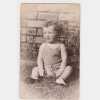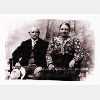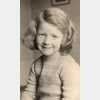| Profile | Posted by | Options | Post Date |

|
AnnCardiff
|
Report
|
16 Jan 2009 10:56 |
|
Odlum
Adlum the older form of this name has been recorded in relatively recent times in Co. Offaly. This, as Adelem (later Adlam), is recorded in England since the twelfth century: Derived from the Old-German adelelm (noble protector). As Odlum it appeared in Ireland in the seventeenth century: Thomas Odlum was one of 29 soldiers disbanded from Ormond's own troop in 166l The family settled in Co. Offaly and there are many Odlum wills listed from 1735, the testators up to 1800 being variously described as "farmer" and "gent" and all of that county. Three Odlums were in the Earl of Charleville's rental of 1763. Later they were found also in Co. Leix, but Griffith's Valuation of the 1850's and modern voters' lists show that they are definitely of Co. Offaly ever since they first came to Ireland. The name is very well known in the flour milling industry.
Parsons
The Parsons family has been of importance in Offaly since the end of the sixteenth century when the brother of the celebrated Sir William Parsons settled at Birr. The name of that thriving town was changed to Parsonstown: the old name, however, was restored some fifty years age. The head of the family is the Earl of Rosse who is resident at Birr Castle. Sir William Parsons (c. 1570-1650), Surveyor General of Ireland, was one of the most active and efficient of English officials in Ireland. His nephew, Sir Lawrence Parsons (c. 1630-1698), born at Birr, took an active part against James II. More recent members of the family have been distinguished for their work in the spheres of science and agriculture. Especially noteworthy was Sir William Parsons (1800-1867), 3rd Earl of Rosse, whose observations by means of the great telescope he installed at Birr Castle are of lasting importance. His father, Sir Lawrence Parsons, the 2nd Earl, was one of the prominent opponents of the Union in Grattan's Parliament. The name Parsons, which is very common in England, is now found in small numbers in several widely separated parts of Ireland, presumably as the result of comparatively recent commercial immigration from England. Some Irish families called Parsons may be of Gaelic origin. In the Tudor Fiants we frequently meet MacEparson, MacParson etc. In Scotland the name became MacPherson.
Poland
Polan Polin and MacPolin are found today almost exclusively in counties Armagh and Down, and MacPolin is in the 1664-5 list of Co. Armagh householders. Poland on the other hand is essentially an Offaly name. It can be accepted that derivation of Polin and MacPolin is from Paulin, a diminutive of Paul. Monsignor MacPolin of the Maynooth Mission to China was prefect-apostolic in Korea during the second World War.
Swords
Today there are a number of families called Swords in Dublin. The name has, Usually no connection with the Co. Dublin village of Swords. It derives from two distinct Gaelic-Irish surnames which belong to the counties of Offaly and Leix: in Offaly it is numerous today, as it is in the neighbouring county of Kildare, as is Clavin. Clavin is Ó Claimhín in Irish, was sometimes anglicized Swords by mistake assuming that the root word is claidheamh (a sword). The other derivation is from Ó Suaird, which in a Fiant of 1562 is anglicized O'Sword. Two others of around the same time have O'Swerte: The three relate to the Leix-Offaly area. Since 1016, maybe before the era of fixed hereditary surnames, Ó Suairt is mentioned by the Four Masters as the name of the then successor of St. Brigid, the Abbess of Kildare. The names Swords, Swoordes and Sourdes all appear in the Ulster inquisition of the first half of the seventeenth century. These two names also relate to their midland homeland; they are evidently known in Co. Mayo, for list of synonyms by local registrars includes Claveen and Swords at Ballinrobe. In the fourteenth century, the surname de Swerdes (derived from the village) was recorded in many places in Ireland; and in the Ulster inquisitions of the first half of the seventeenth century Swords, Swoordes and Sourdes is found in Co. Down.
|

|
AnnCardiff
|
Report
|
16 Jan 2009 10:57 |
|
Directory - Society: Genealogy: Surnames: K
5 Nov 2008 ... Surnames include Crabtree, Rowe, Kilhefner, Springer, Kahl and Keegan. Killough Reunion Association - Primary purpose is to assist those who ...
www.dmoz.org/Society/Genealogy/Surnames/K/ - 29k - Similar pages
http://www.dmoz.org/Society/Genealogy/Surnames/K/
|

|
AnnCardiff
|
Report
|
16 Jan 2009 15:06 |
|
it's so easy to look for yourself you know!!!
Surname: Hyde
This most interesting surname is a variant of "Hide", which has two possible origins. Firstly, it may be a topographical surname for the "holder of a hide", which described someone who lived on and farmed a piece of land originally named as a "hide of land" from the Olde English pre 7th Century "hi(gi)d". A hide was quite a substantial amount for those days, varying from sixty to one hundred and twenty acres. It seems to have been originally fixed as the amount of land necessary to support one extended family, as the Olde English word for a household, "higan", would seem to suggest a common etymology with "hi(gi)d". The name may also be a variant of the personal feminine name "Ida", with the inorganic "h" usually added to names beginning with a vowel. Avice atte Hyde was recorded in 1296 in the Subsidy Rolls of Sussex. Interesting namebearers include Edward Hyde (1609 - 1674), first earl of Clarendon, who was a supporter of Charles 1 and became secretary of state, lord chancellor and chief advisor to Charles 11 at the Restoration. Edward Hyde, Esq. popularly known as Lord Cornbury, was appointed Captain General and Governor-in-Chief of New York in 1701. The first recorded spelling of the family name is shown to be that of Robert de la Hyda, which was dated 1188, in the "Pipe Rolls of Dorset", during the reign of King Henry 11, known as "The Builder of Churches", 1154 - 1189. Surnames became necessary when governments introduced personal taxation. In England this was known as Poll Tax. Throughout the centuries, surnames in every country have continued to "develop" often leading to astonishing variants of the original spelling.
|

|
AnnCardiff
|
Report
|
16 Jan 2009 15:09 |
|
Duff Surname Origin
In the Gaelic, signifies black, but in the Cornish British and Welsh, a captain
|

|
AnnCardiff
|
Report
|
16 Jan 2009 15:10 |
|
|
The surname Duff is of Pictish Origin and has roots in the ancient Scottish territories first recorded in Perthshire, Scotland. The Duff family is a sept of the clan MacDuff and is entitled to clan rights including use of the tartan.
The Shield is gold with a red lion rampant. The crest is a lion rampant holding a sword.
The motto is "Deus Juvat"
|

|
Pam
|
Report
|
16 Jan 2009 18:32 |
|
Hi Teresa
Can you look up Logan Maguire and Fallon please
Thankyou
Pam
|

|
Teresa With Irish Blood in Me Veins
|
Report
|
16 Jan 2009 20:25 |
|
Pam
Logan Maguire and Fallon can all be found on this website:
http://freepages.genealogy.rootsweb.ancestry.com/~irishsurnames/
I'm not supposed to post the details on here as.............
"All material on this site is copyright".
But it's a free site to use!
.
|

|
Deetur
|
Report
|
16 Jan 2009 20:35 |
|
Hi,
I've had a quick scan through and can't see it already - but apologies if you have already added it.
Malone / Maloney
Thanks,
Danni
|

|
AnnCardiff
|
Report
|
16 Jan 2009 20:45 |
|
History of the surname:
Although Malone is a genuine O name, being in Irish O Maoileoin (meaning descendant of the follower of St. John), it is never met with in English with its prefix. The Malones are an ancient sept, associated with the O'Connors of Connacht, and their principal family was for centuries associated with the Abbey of Clonmacnois, to which they furnished many abbots and bishops, for Clonmacnois was for a time an independent see before being united with Ardagh. Rev. Professor John Ryan, S.J. pointed out to me that the alleged close connexion of the O'Malones with the O'connors of Connacht did not exist, being the result of a pedigree which was a forgery. For the suggestion regarding the origin of the Malones of Co. Clare see Muldoon. Unlike most old Irish septs its modern representatives are not found in any considerable numbers in the territory of their origin: Counties Clare and Wexford - in quite different parts of the country - now have more Malones than other areas. The Clare Malones are probably descendants of the Clonmacnois sept, but the origin of those of Wexford is obscure. The Rev. Sylvester Malone (1822-1906), author of the Church History of Ireland, was a Clare priest. Another notable priest of the name was Rev. William Malone (1586-1659), Superior of the Jesuit Mission to Ireland. Three Malones sat in the Parliament of 1689, three served in King James II's army in Ireland and eight were attainted after 1691. One family of Malones was outstanding in the eighteenth century in Ireland. They had conformed, but were nevertheless prominent in their advocacy of Catholic emancipation. Anthony Malone (1700-1776) was Chancellor of the Exchequer; his brother Edmund Malone 91704-1776) was an Irish M.P. and judge, and the latter's sons were noteworthy - Edmund Malone (1741-1812) as friend of Johnson, Boswell etc. and Shakespearian critic while Richard Malone (1738-1816) was another prominent Irish M.P.
|

|
Pam
|
Report
|
17 Jan 2009 11:26 |
|
Thanks Teresa for the web address
Will go on there now.
Best wishes
Pam
|

|
AnnCardiff
|
Report
|
17 Jan 2009 11:43 |
|
Logan Surname Origin
(Origin Gaelic) An inclosed plain or low-lying place. If the residence of a Briton was on a plain, it was called Lann, from Lagen or Logen; if on an eminence, it was termed dun.
|

|
AnnCardiff
|
Report
|
17 Jan 2009 11:44 |
|
Surname: Logan
Recorded as de Logan, O' Logan, Logan, and Lagan, this famous Gaelic surname is confusingly both Scottish and Irish, and in both countries may also have a Norman origin! It is generally considered in Ireland to derive from the Gaelic O'Leoghain, translating as 'the son of the descendant of the Warrior', and this is probably so with many nameholders. However there is also a claim that it is recorded as 'de Logan' in Normandy, even before the 1066 Invasion of England, and that these 'de Logans' accompanied Strongbow, Earl of Pembroke, on his 1170 invasion of Ireland. To further add to the confusion there are several places in Scotland called Logan, and it is possible that some of these may have Norman ancestry. Black's 'Surnames of Scotland' gives the origination of the Clan Logan as from an area known as 'The lands of Logan' in Ayrshire. Thurgand de Logyn rendered homage to the Scottish Government in 1296, whilst in 1307 John de Logan was recorded as being 'an enemy of the King of England'. The Irish O'Logans were originally the Lords of Morgallion, in County Westmeath in circa 1300. The first recorded spelling of the family name is shown to be that of Robert Logan, which was dated 1204, a witness to the charter of Ingilbristoun, Scotland, during the reign of King William, known as 'The Lion of Scotland', 1165 - 1214. Surnames became necessary when governments introduced personal taxation. In England this was known as Poll Tax. Throughout the centuries, surnames in every country have continued to "develop" often leading to astonishing variants of the original spelling.
|

|
AnnCardiff
|
Report
|
17 Jan 2009 11:45 |
|
Logan Clan
Logan Clan Crest: A passion-nail, piercing a man's heart.
Logan Clan Motto: Hoc Majorum Virtus (This is the valour of my ancestors).
Logan Clan History:
Two distinct branches of this Family exist, one Highland, usually taking the name MacLennan; the other, Lowland, which descends from Sir Robert Logan of Restalrig who married a daughter of Robert II and, in 1400, became Admiral of Scotland. Over a century earlier, Philippe de Logyn, Burgess of Montrose, and Thurbrand de Logyn of Dumfriesshire had rendered homage to Edward I of England in 1296.
The surname of Logan, however, is thought to have derived from the place name Logan in Ayrshire. Sir Robert and Sir Walter Logan were among the Scottish nobles who in 1329 set off on a pilgrimage to the Holy Land with the heart of Robert the Bruce. At the Battle of Teba fought against the Moors in Andalucía in Spain they were both were killed.
In 1600, Sir Robert Logan of Restalrig was implicated in the Gowrie Conspiracy and in the aftermath, his lands became forfeit to the Crown.
John Logan (1748-88) was born at Soutra, Midlothian and was ordained to the Parish of South Leith. He wrote, Ode to a Cuckoo. James Logan (1794-1872) was author of The Scottish Gael. Sir William Logan (1798-1875) was a Scottish geologist. Between 1842 and 1871, he directed the Canadian Geological Survey. Jimmy Logan (1921- 2001) was a much loved Scottish entertainer, theatre owner and actor.
A Clan Logan Society was founded in Glasgow in 1913.
Places of Interest:
Drumderfit, Ross and Cromarty. Lands held by Logans before 15th century.
Restalrig, Edinburgh. The lands here belonged to the Lestalric Family and passed by marriage to the Logans in the 14th century. They were confiscated following the Gowrie conspiracy.
The Preceptory of Saint Anthony, Edinburgh. The ruins of a small religious establishment founded in 1430 by Sir Robert Logan of Restalrig can be seen on a level of Arthur's Seat, in sight of the Palace of Holyroodhouse.
Fast Castle, Coldingham, East Lothian. Passed by marriage to Sir Robert Logan of Restalrig in 1580. He died here two years later having been outlawed for his part in the Gowrie Conspiracy.
|

|
AnnCardiff
|
Report
|
17 Jan 2009 11:48 |
|
thought I'd do Sullivan as it is my surname!!!
Osuileabhain
Maryl Hook provides the following information concerning the O'Sullivan name: Here's what Edward MacLysaght, Former Chief Herald of Ireland (Crown Publishers, Inc., New York, 1972) says about the Sullivan surname:
"O'SULLIVAN, (p. 270) - In Irish O'Sullivan is O'Suileabhain. The derivation of the name is in dispute among scholars. There is no doubt that the root word is suil (eye), but whether it is to be taken as one-eyed or hawk-eyed must be left an open question. While not quite as numerous as Murphy and Kelly, Sullivan, which is by far the commonest surname in Munster, comes third in the list for all Ireland. Almost eighty per cent of the Sullivans (or O'Sullivans) in Ireland to-day belong to the counties of Cork and Kerry, the remainder being mostly of Co. Limerick, or of the city of Dublin, in which, of course, families from all the four provinces are found. Thus the O'Sullivans, as is almost always the case with the great Gaelic septs, are still concentrated in or near their ancient homeland. It was not until after the Anglo-Norman invasion that the O'Sullivans came to the fore. Their origin, however, is illustrious: descended from Eoghan (Owen) Mor, the father of the famous Oilioll Olum, they were, with the O'Callaghans, the MacCarthys and the O'Keeffe, one of the leading families of the Munster Eoghanacht. Some at least of them were lords of a territory near Cahir prior to the invasion: from 1200 onwards, however, they are to be found in the extreme south-west of Munster. There they became very numerous and powerful, dividing into a number of branch septs of which O'Sullivan Mor and O'Sullivan Beare were the most important. The former had his principal castle at Dunkerron on the shore of Kenmare Bay, the latter was lord of the modern baronies of Beare and Bantry. Though seldom appearing in any of the Annals before the year 1400, they were prominent in the sixteenth century."
The standard naming practice for sons among families in the area was for the first son to be called after the paternal grandfather, the second son after the oldest uncle (often the paternal great grandfather) and the third son after the father. In this way you get names repeating in each family over and over and indeed multiplying every generation. This, allied to the fact that there were just so many O'Sullivans in general, also gave rise to family nicknames.
About 1600 BC, a Celtic tribe led by a man named Owen landed on the Beara Peninsula in the southwestern part of Ireland. They call themselves the "Children of Owen" or the Eoganacht. As the group becomes larger, they are led by the McCarthy sept and form what is known as Munster (as in the four nations of Ireland: Ulster, Leinster, Connaught and Munster).
By 700-900 AD, the leading sept, the McCarthy-Mor split and a group adopted the name O'Suileabhain which is Irish Gaelic for the descendants of "One-Eye" (why is not known, possibly to scare away rivals) or "Eagle-Eye". The original land split gave them land along the River Suir in Co Tipperary near Knockgraffon. During this period the O'Sullivans of Knockgraffon lived quietly along the River Suir "peacefully stealing their neighbors' cattle and gold smithing".
In 1192, this group of O'Sullivans were driven from Tipperary by the Normans and appeared to undergo a major attitude change as they were driven into the O'Driscoll's territory. The O'Sullivans drove the O'Driscolls into the sea around the Beara Peninsula and the sept split into two groups: the O'Sullivan Mor and the O'Sullivan Bear. "Mor" means main, large or big and appears here to mean something like "main" or "main-line" Sullivans and "bear" or "beara" refers to the Beara Peninsula. The O'Sullivan-Mor group moved northwest to the Iveagh or Kenmare Peninsula behind the "Gap of Dunloe" in a stronghold from which they controlled the peninsula for almost 500 years of warfare before the English could penetrate the Gap. In this area, which is today called the Ring of Kerry, the O'Sullivan-Mor regarded themselves almost as a separate country. They had a castle at Kenmare called Dunkerron. The O'Sullivan Bear moved into the Bantry Bay area and had a castle at Ardloe.
Between 900 and 1609, an O'Sullivan-Mor led the Eagonnacht nine times and was its last leader in 1609. While the leader of the Eagonnacht, the Rock of Cashel was their castle.
In the 1300s there was a convention to determine which families in Europe were Royal. Families from all over Europe sent representatives. Most were turned down. How the O'Sullivan Mor was able to convince the committee that the O'Sullivan-Mor were a Royal Family is unknown, but he did it and as a result the O'Sullivan Mor coat of arms has the crown of a king on it.
In the nine years war culminating in the Seige of Kinsale on Christmas Eve of 1601, O'Sullivan Beare's forces were defeated and he returned to his castle at Dunboy. In June of 1602, Dunboy Castle was beseiged by Carew of England, and all of its inhabitants slaughtered; however, Donal Cam O'Sullivan Beare at the time was at another castle in Ardea, awaiting reinforcements from Spain. In January of 1603 he led 1,000 followers across Ireland in what is known as O'Sullivan's March. Thirty-five (35) people finished the journey, and Donal eventually escaped to Spain. Other Irish Chieftans escaped to Spain in what is known as the "Flight of the Earls", except one: the O'Sullivan Mor was driven back to Dunloe. When the O'Sullivan Mor fell back into the Ring of Kerry, he disappeared.
The O'Sullivan Bear was killed while attempting to save a friend during a duel in Spain in 1618. Some of his descendants, however, were given land grants in the land of Beara and Bantry. The present day O'Sullivan Bear clan claims leadership of the O'Sullivan clan world-wide. No claim for the title of O'Sullivan Mor has been honored since 1609.
By 1601 and the Seige of Kinsale, there were seven O'Sullivan septs (per Irish surnames by Wolfe) including O'Sullivan-Mor (representing 40% of all Sullivans) of Co Kerry and areas north of Kerry, and Co Tipperary and O'Sullivan-Bear of Co Cork (30% of all Sullivans). About thirty years after this, Cromwell came to Ireland and the Sullivans were one of his favorite targets in his campaigns. Migration out of the British Isles accelerated as people tried to get out of his way.
Today the name of Sullivan is so common in some areas of Ireland that nicknames designate the families. The family nicknames don't have anything to do with -Mor or -Bear, but are based on location. In theory, all Sullivans are descended from one man, making the name O'Sullivan one of the oldest, most numerous European family surnames (differing from occupation surnames like Smith).
|

|
Jane
|
Report
|
17 Jan 2009 11:50 |
|
Hi Teresa,
My sil's surname is DRAFFIN- his family was from County Cavan and Monaghan and emigrated to Australia mid 1800s. There is also a TREVAIN
Have a good day,
Jane
|

|
AnnCardiff
|
Report
|
17 Jan 2009 12:24 |
|
google for it - just put "surname Draffin" in the search box - and that goes for any surname - just surname [whatever]
|

|
Frances
|
Report
|
17 Jan 2009 15:27 |
|
Hi Ann,
Thank you for your kind offer. GLADNEY is the name which interests me and a letter from 1922 suggests that the Gladneys came from Holland. originally There were Gladneys in Antrim and Wexford in the 18th century. Googling this name has not helped me.
Regards,
Frances
|

|
lexi
|
Report
|
17 Jan 2009 16:53 |
|
i have 2 names,
MONTGOMERY & CLEMENTS
thanks.x
|

|
Alison
|
Report
|
17 Jan 2009 17:20 |
|
Thanks
The name I have is HOEY
Alison
|

|
AnnCardiff
|
Report
|
17 Jan 2009 17:22 |
|
Emigrants from Counties Wexford and Carlow, Ireland (c. 1000...
If you wish, I could add your e-mail and address to my web site. There may be others researching the Gladney surname. Just let me know. ... Al Lewis ...
www.bytown.net/wexlist.htm - 12k - Similar pages
http://www.bytown.net/wexlist.htm
Farnworth - Family History, Genealogy, Surnames and Local Hi...
Lancashire UK - Genealogy, Surnames, Family and Local History ... Is anyone looking for the Gladney families, originally from Counties Wexford and Carlow in ...
www.curiousfox.com/history/lancashire_32.html - 60k - Similar pages
|

